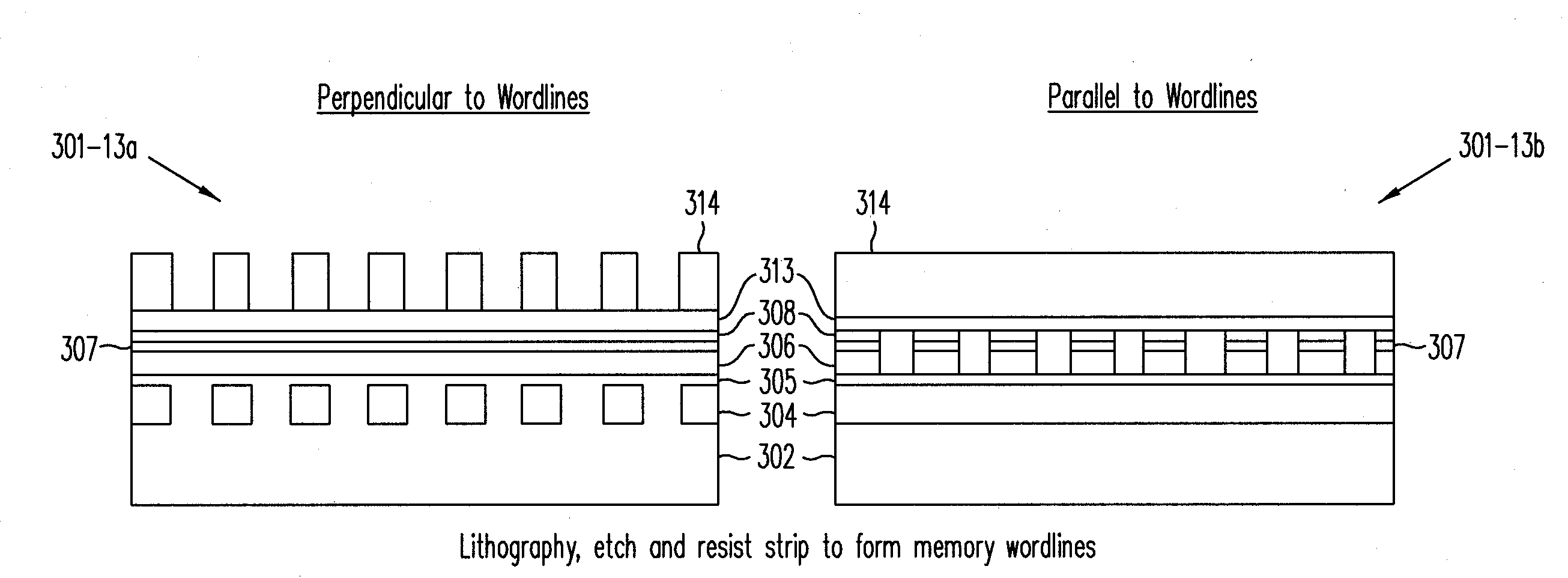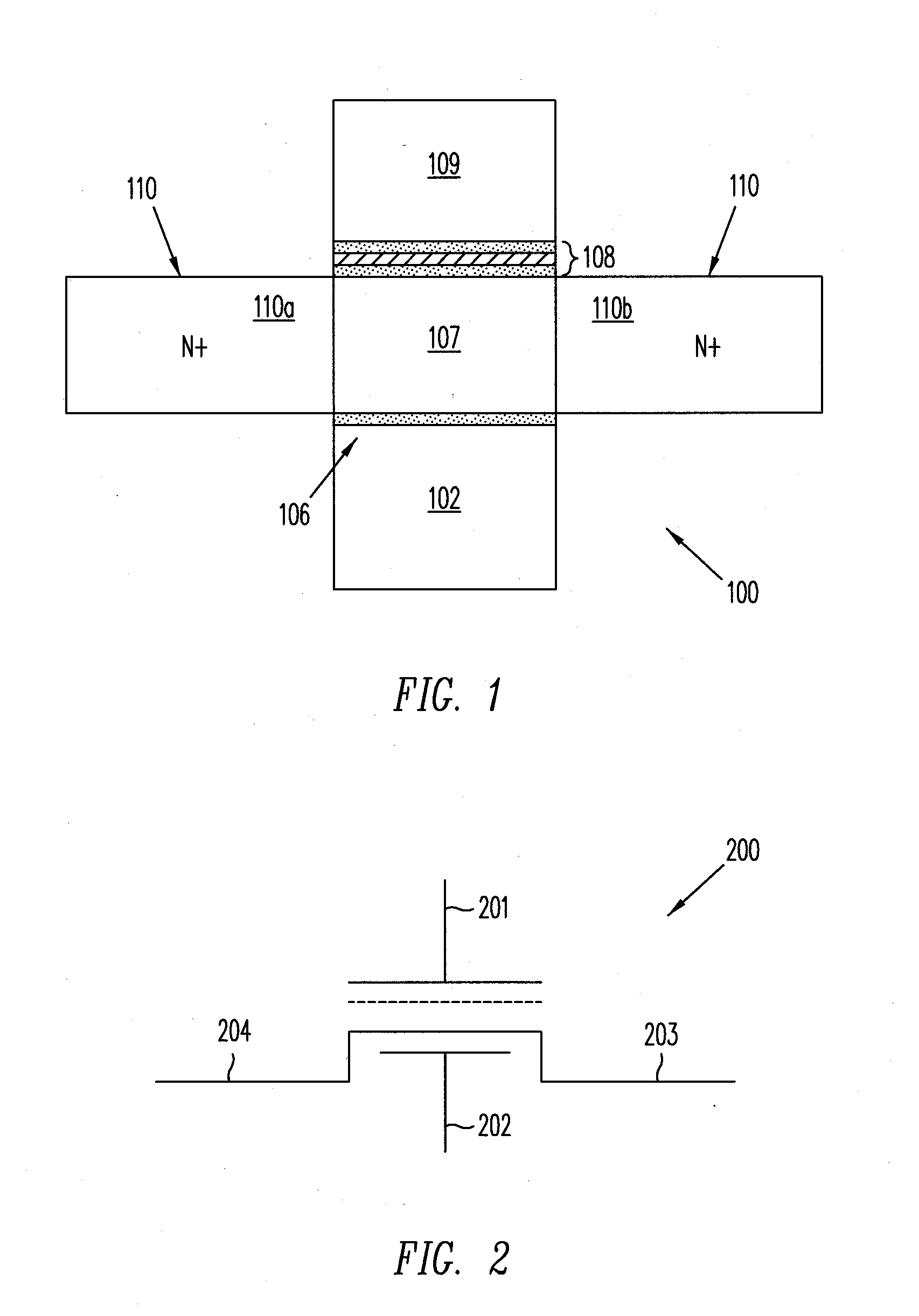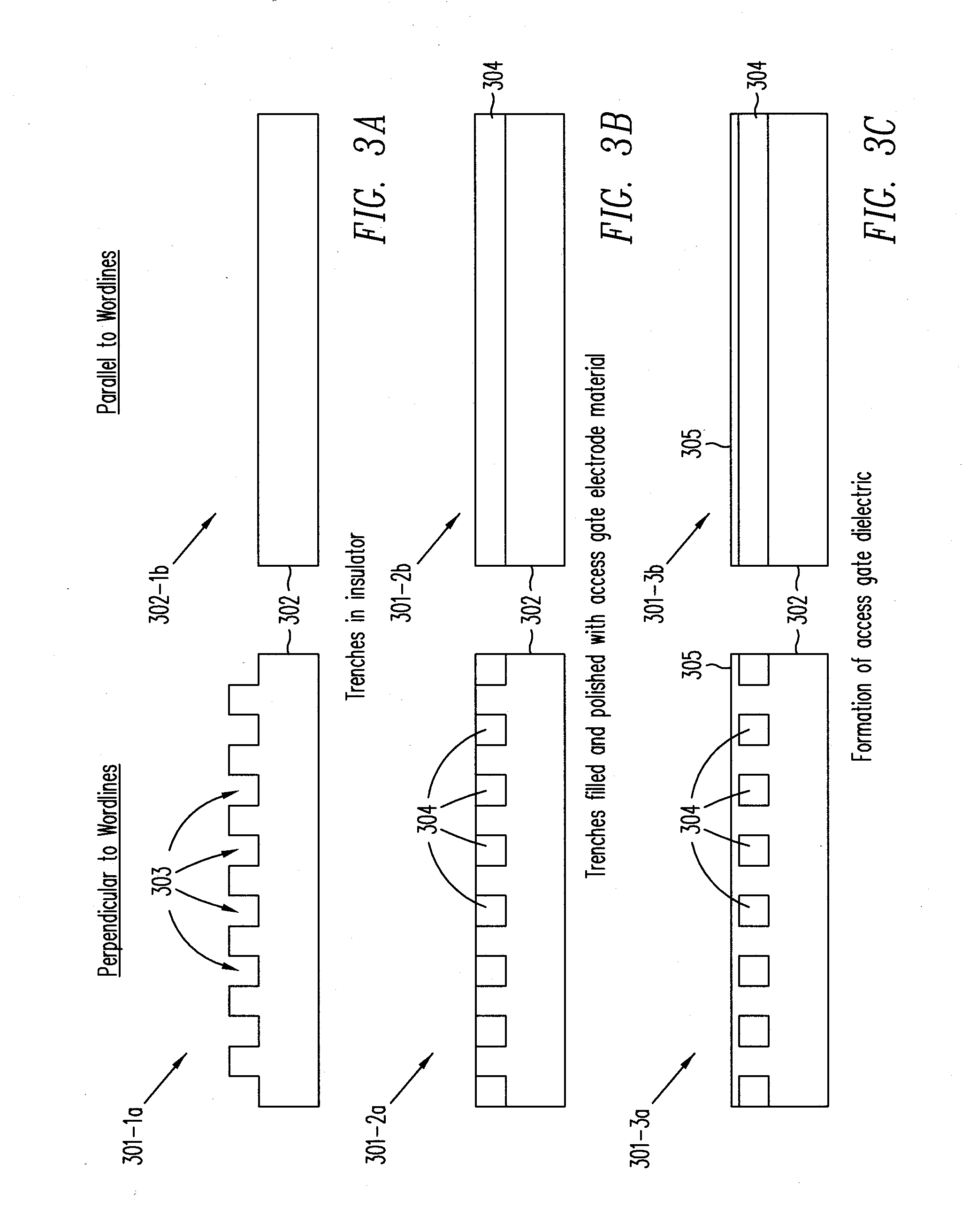Retention improvement in dual-gate memory
a dual-gate memory and charge retention technology, applied in the direction of basic electric elements, electrical equipment, semiconductor devices, etc., can solve the problems of charge retention, difficulty in maintaining clear distinction between erased and programmed threshold voltages, and the lateral charge motion within the nitride-containing charge-trapping medium is a problem, so as to achieve the effect of minimizing the lateral charge motion problem
- Summary
- Abstract
- Description
- Claims
- Application Information
AI Technical Summary
Benefits of technology
Problems solved by technology
Method used
Image
Examples
Embodiment Construction
[0013]FIG. 1 is a schematic cross-section of dual-gate memory cell 100 formed by a memory device and a non-memory device (also, referred to as an “access device”). As shown in FIG. 1, the access device includes gate dielectric 106 and gate electrode 102 and the memory device includes gate dielectric stack 108 and gate electrode 109. Gate dielectric stack 108 includes a charge-trapping layer that stores charge in a non-volatile fashion. The memory and access devices share source and drain regions 110 and active region 107., Although shown having the memory device formed above the access device, these device may be formed in the reverse order—i.e., with the memory device formed underneath the access device. FIG. 2 is a graphical representation 200 of a dual-gate device, indicating gate electrode 201 of the memory device, and gate electrode 202 of the access device, with source and drain connections 203 and 204.
[0014]The advantages of dual-gate non-volatile memory cells are discussed, ...
PUM
 Login to View More
Login to View More Abstract
Description
Claims
Application Information
 Login to View More
Login to View More - R&D
- Intellectual Property
- Life Sciences
- Materials
- Tech Scout
- Unparalleled Data Quality
- Higher Quality Content
- 60% Fewer Hallucinations
Browse by: Latest US Patents, China's latest patents, Technical Efficacy Thesaurus, Application Domain, Technology Topic, Popular Technical Reports.
© 2025 PatSnap. All rights reserved.Legal|Privacy policy|Modern Slavery Act Transparency Statement|Sitemap|About US| Contact US: help@patsnap.com



